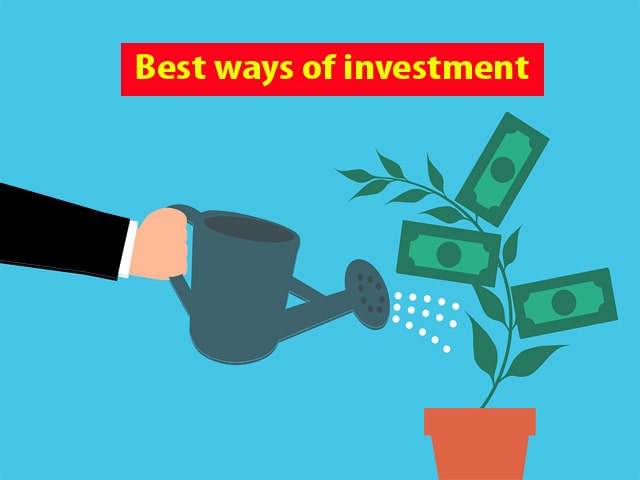Investment remained as one of the basic processes for the future of man today. Everyone definitely thinks about investing money. Some of them also keep in searching for the formula of earning high returns with low risk. But the fact is that, if the risk is really low then the returns are also less. So before thinking about investment one should open his eye to visualize the future returns and the risk it’s behind.
Table of Contents
ToggleBe a good Investor
A person who invests money for a future return is called an investor. Some investors are there, they carry high risk but they have the potential of invest in generating high inflation-adjusted returns than other asset classes in the long term. such types of investors have a broader out look and knowledge towards their field of investment
But Many investors are here who invest money having a zero knowledge of where they invest. So they get trapped to invest their money ignorantly which results them to frustrate in future. A number of examples of spoiling hard earning money in the name of investment are there, which we are hearing in our daily life.
That’s why if you are in think of investment, you should be aware of several ways of investment and the risk-rewards of which favorable to it. then you have to find out the way how much risk can be tolerated.
After getting a generalized idea, you have to choose the right one which is better to suit your lifestyle. Set a goal of investment by calculating your present financial ability and future needs.
Best ways of investment in India
The 2 assets- where all invested money falls into.
1.Non-financial assets: Investment in gold and real estate. This is one of the famous models of investment for the people of India.
2.Financial assets: These assets are two types. They are market-linked products (like stocks and mutual funds) and fixed income products (like public provident fund, bank fixed deposits).
1. Non-financial Assets
i) Gold
Gold is one of the common assets for investment and it is used in the form of ornaments. Ornament gold consumes some making charges, which typically range between 6-14 percent of the cost of gold (and may go as high as 25 percent in case of special designs). There’s still a good option for investment for gold coins and one can also buy ingeniously minted coins.
Gold ETFs are An alternate way of owning paper gold in a more cost-effective manner. Such a kind of investment (buying and selling) happens on a stock exchange (NSE or BSE) with gold as the underlying asset. Another option to own a paper-gold is investing in Sovereign Gold Bonds. See the chart below to get a generalized concept of the inflation of gold price between the last 100 years, i.e from1900-2000
ii) Real Estate
The house that you live in is for self-intake and should never be considered as an investment. If you do now not intend to stay in it, the second property you buy can be your investment.
The vicinity of the assets is the single most essential issue that will decide the value of your property and also the condominium that it can earn. Investments in actual estate supply return in ways – capital appreciation and rentals.
However, not like different asset classes, real property is tremendously illiquid. The different massive risk is with getting the necessary regulatory approvals, which has largely been addressed after the coming of the real property regulator.
2. Financial Assets
i) Direct equity
Investing in stocks won’t be everyone’s cup of tea as it is an unstable asset magnificence and there is no guarantee of returns. Further, it is very difficult to choose the proper stock, timing your access, and go out is also now not easy.
The most effective silver lining is that over lengthy periods, fairness has been able to deliver better than inflation-adjusted returns as compared to all different asset classes.
At the identical time, the threat of dropping a large part of capital is excessive except one opts for a stop-loss technique to curtail losses. In stop-loss, one location an advance order to promote an inventory at a particular price.
To reduce the danger to a certain extent, you could diversify throughout sectors and marketplace capitalizations.
Equity mutual funds predominantly put money into equity shares. The returns are largely dependent on a fund manager’s potential in an actively traded fund, to generate returns. Index price range and exchange-traded fund (ETFs) are passively managed, and these songs the underlying index. Equity schemes are categorized according to marketplace-capitalization or the sectors in which they invest. They also are categorized through whether they are domestic (making an investment in stocks of only Indian companies) or international (investing in stocks of overseas companies).
As per the modern Securities and Exchange Board of India (SEBI), Mutual Fund Regulations, an equity mutual fund scheme should invest at least 65 percent of its belongings in equities and equity-related instruments. An equity fund can be actively managed or passively controlled. Currently, the 1-, 3-, 5-yr marketplace go back is around 15 percentage, 15 percentage, and 20 percentage, respectively.
iii) Debt mutual funds
The debt price range is perfect for traders who want steady returns. They are much less volatile and, hence, much less risky as compared to fairness funds. Debt mutual price range primarily invests in fixed-hobby producing securities like corporate bonds, authorities securities, treasury bills, commercial paper, and other cash market place instruments. Currently, the 1-, 3-, 5-12 months market go back is around 6.5 percent, eight percent, and 7.five percent, respectively.
iv) National Pension System (NPS)
The National Pension System (NPS). It is a long term retirement – centered funding product. It is managed with the aid of the Pension Fund Regulatory and Development Authority (PFRDA). And It is a mix of equity, fixed deposits, company bonds, liquid finances, and government budget, among others.
Based on your risk appetite, you can determine how a whole lot of your money may be invested in equities via NPS.
The minimum annual (April-March) contribution for an NPS Tier-1 account to remain energetic has been reduced from Rs 6,000 to Rs 1,000. Currently, the 1-,3-,five-12 months marketplace go back for Fund choice E is around 9.five percent, 8.5 percent, and eleven percent, respectively.
v) Public Provident Fund (PPF)
The Public Provident Fund (PPF) is one product a whole lot of humans turn to. Since the PPF has extended the tenure of 15 years, the effect of compounding of tax-free interest is huge, especially in the later years. Further, in view that the hobby earned and the major invested is backed by means of sovereign guarantee, it makes it a safe investment.
vi) Bank fixed deposit (FD)
A financial institution fixed deposit (FD) is a safe desire for investing in India. Under the deposit coverage and credit guarantee corporation (DICGC) rules, each depositor in a bank is insured as much as most of Rs 1 lakh for both important and interest amounts. As in step with the need, one may choose a monthly, quarterly, half-every year, every year, or cumulative interest option in them. The hobby price earned is brought to one’s earnings and is taxed as in line with one’s profits slab.
vii) Senior Citizens’ Saving Scheme (SCSS)
The Senior Citizens’ Saving Scheme (SCSS) is a must-have in their funding portfolios, probably it is the first choice of maximum retirees. As the call suggests, most effective senior residents or early retirees can spend money on this scheme.
SCSS can be availed from a post workplace or a bank by everybody above 60. SCSS has a five-12 months tenure, which may be further prolonged by 3 years once the scheme matures.
Currently, the interest charge that may be earned on SCSS is 8.threein keeping with cent in line with annum, payable quarterly and is absolutely taxable. The upper investment restriction is Rs 15 lakh, and one may also open more than one account.
viii) RBI Taxable Bonds
The government has revised the erstwhile 8 percentage Savings (Taxable) Bonds 2003 with the 7.75 percent Savings (Taxable) Bonds. These bonds come with a tenure of seven years. That bond can be issued in Dematerialised (Demat) form and credited to the Bond Ledger Account (BLA) of the investor. A Certificate of Holding is given to the investor as evidence of investment.
What should you do with your Investment?
From the above investments, some are fixed-profits while others are connected directly or indirectly to the market. Both fixed-profits and market-linked investments have a role to plan inside the manner of wealth creation. While market-connected investments help in navigating the volatility and inside the technique generate a high real return.
But the fixed profits investments help in retaining the gathered wealth with the intention to meet the favored goal. For long-time period goals, it is essential to make satisfactory use of both these assets.


Comments are closed.